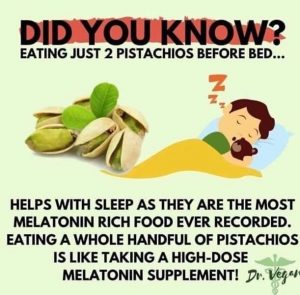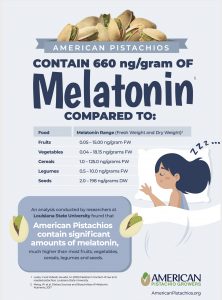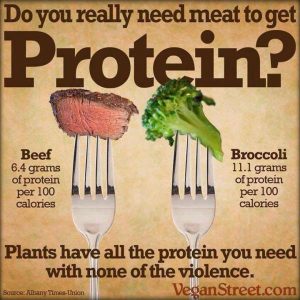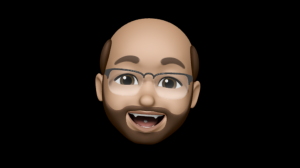A review of two misconceptions in social media today.
So, when I am treating school age patients, I love to know what their plans are for the future, what sports they are doing (and to what level) and also what subjects they enjoy at school. Personally, I was a maths and science geek at school (bet you couldn’t have guessed that??), so I often take some of that understanding for granted.
Infographs are quite common on social media and they can provide good information in an easy to understand way. However, like a lot of information available on the internet today, you need to be careful and really check the source and the data before you accept it as wrote!
WARNING: A bit of math and numbers coming up!!
This morning I saw a post in my feed on pistachio nuts and I thought “I wonder if they really are that effective for sleep”, but rather than get caught up in the “Does melatonin work for sleep?” debate, I figured reviewing the data behind the claim would be the best place to start.
Example 1

Credit Dr Vegan
So, here we go. The inforgraph suggests that eating just two pistachios before bed will help with sleep as they are the most melatonin rich food ever recorded and that a handful is like taking a high dose supplement.
Looking at some of the research out there, a report published in Nutrients in 2017 claims that there were 233,000 nanograms of melatonin per gram of dry weight pistachios, substantially higher than most other assessed foods. This really is a large amount of melatonin, and these results do not appear to have been replicated to date.

Interestingly an infograph from the American Pistachio Growers cites the 2017 study but notes that a Louisiana State University analysis (in conjunction with the growers association) showed only 660 nanograms per gram of pistachio was found. It is interesting that they reviewed the 2017 article, clearly had an interest in supporting a finding of high melatonin levels, but only found levels of 660 nanograms/g (less than 0.3% of the 2017 study).
This is where the math comes in again. If we accept the 233,000ng/g finding, then the above info may be correct as therapeutic dosing of melatonin can be as low as 0.3mg (300,000ng), but high dosage supplements (not medications) here in New Zealand sit between 3-10mg (3,000,000-10,000,000ng). This means that 2 nuts at 0.57g each, would exceed the lowest therapeutic amount, but, high doses would require:
mg x 1,000,000 / 233,000 nanograms = number of grams of pistachios / 0.57g (average nut weight)
- 23 nuts for 3mg of melatonin.
- 76 nuts for 10mg of melatonin.
Of course, if the Louisiana State paper is correct, the numbers fly up:
mg x 1,000,000 / 660 nanograms = number of grams of pistachios / 0.57g (average nut weight)
- 7975 nuts for 3mg of melatonin.
- 26582 nuts for 10mg of melatonin.
Given there is no confirmation of the concentration of melatonin in the nuts, with two, somewhat, contrary sources, I think to consider if buying/eating pistachio nuts is a great idea for your health, wealth and happiness (and sleep), it would only be fair that we took the highest reported melatonin level (most supportive of the premise) as wrote/established.
So if we compare costs here in New Zealand – a supermarket brand price for shelled pistachios is $7.00 for 120g, at 23 nuts or 13.11g per dose, you would get 9 doses at a cost of $0.78 each. A 3mg supplement tablet can be bought at $14.49 for 200 at a cost of $0.07 per dose, 1/10 of the cost.
Conclusion
So, are pistachios good for your sleep?
- Possibly but the research is not yet clear on this matter – perhaps you only need to munch on 2-23 nuts per night to sleep like a baby, or perhaps a feast of almost 8000 nuts (4kgs) is required.
- If you are budget conscious and keen to give melatonin a try, the supplements appear a far better bang for your buck at a tenth the price.
- Major take home – personally I like pistachios, so, I might just give them a try, but more likely as they fit well within my current dietary approach and taste good rather than for any thoughts that these might improve my sleep.
Example 2
A number of months back I literally found my self (face to face) arguing with a vegan about where you can get your protein, long chain fatty acids and creatine from, and one of his arguments was the broccoli had higher protein than steak…… (see the infographic below). Now I am NOT a nutritionist or dietician, but I was interested in having a closer look at this claim.

Credit Vegan Street
So, sounds like broccoli is the winner… or is it.
Beyond simply questioning the statistics on the infographic, the joys of having an interest in science and math is understanding units of measure. Calories are a very unusual measure to use when looking at a volume of food. This is because foods have different caloric/energy densities, a concept that even forms part of some diet approaches and medical recommendations.
Before I start trying to put the numbers into an easier to understand and less deceptive format, lets first look at the claimed protein levels. NutritionIX has handy calculators which, once calculated put 100 calories of broccoli at 6.9 grams of protein and steak at 9.4. This is quite a bit different from the amounts noted.
Lets look at this in a different way, to gain the recommended protein intake per day, Healthline recommends 56gm per day for a man and 46gm per day for a woman (average individuals).
Using some mathematics;
Recommended protein / protein per 100 calories * 100 calories = calories of broccoli/steak to be consumed
- A man would need 812 calories of broccoli or 595 calories of steak.
- A woman would need 667 calories of broccoli or 489 calories of steak.
I hope you are with me so far, because this is where things get interesting. Using NutritionIX and some reverse math, 100 calories of; broccoli is 286gms, or 36gms of steak.
This means daily recommended intake becomes:
- 2.32kg of broccoli or 214gms of steak for a man.
- 1.9kg of broccoli or 176gms of steak for a woman.
McCaskie’s butcher (UK) notes that the most common size of a steak is 225gms – so you would be pretty much sorted with one standard steak meal.
Healthline notes that 1 cup of broccoli weights 91gms, so you would need to consume 25.5 cups (male) / 21 cups (female) of broccoli to get the same. Now, if we took the claimed 11.1gms per 100 calories, it would still require consumption of the best part of 16 cups for an average male and 13 cups for the average female. (It is worth noting that a simple google search will demonstrate that the average serving size for broccoli is 1 cup per person per meal.)
Unfortunately, even putting aside concerns about the claims of 11.1gms of protein per 100 calories, consuming anywhere from 13-26 cups of broccoli in a day would not be a good way for anyone to get their daily protein, and it would give you, more than 190%-300% (put in 1456g for 16 cups, 2320g for 25.5) of the recommended daily fibre intake….. so you would be VERY, umm, regular….
Conclusion
Is Broccoli a good source of protein?
- As far as vegetables go…. yes!
- Is it a source of protein comparable to steak? Well, no, not even close.
- Should you try and get your daily protein from broccoli alone? Well, I wouldn’t recommend it, I am sure you have more important uses of your time…… unless you really need to catch up on your social media.
The take homes:
- Infographs on social media can be a great source of information in an easy to digest way, however, be very careful when there are statistics involved.
- It is important that the source of these statistics is noted and if they seem surprising, look into them a bit before you end up believing them to be true.
- Like Pistachios? You could try a couple at night before bed, but it could end up an expensive habit if you want to try high dose melatonin.
- If you are already vegetarian/vegan, broccoli is a great source of protein – but sadly, it simply cannot hold a candle to the might of steak, if you are looking for a primary source of protein in your diet.
- If you are not all that sure if the claims/statistics are true or false, talk to a medical or registered health professional before you try to apply any conclusions to your life.
- Stay sceptical – people love to twist numbers to support what they think.
Health & Fitness
Az

Leave a Reply